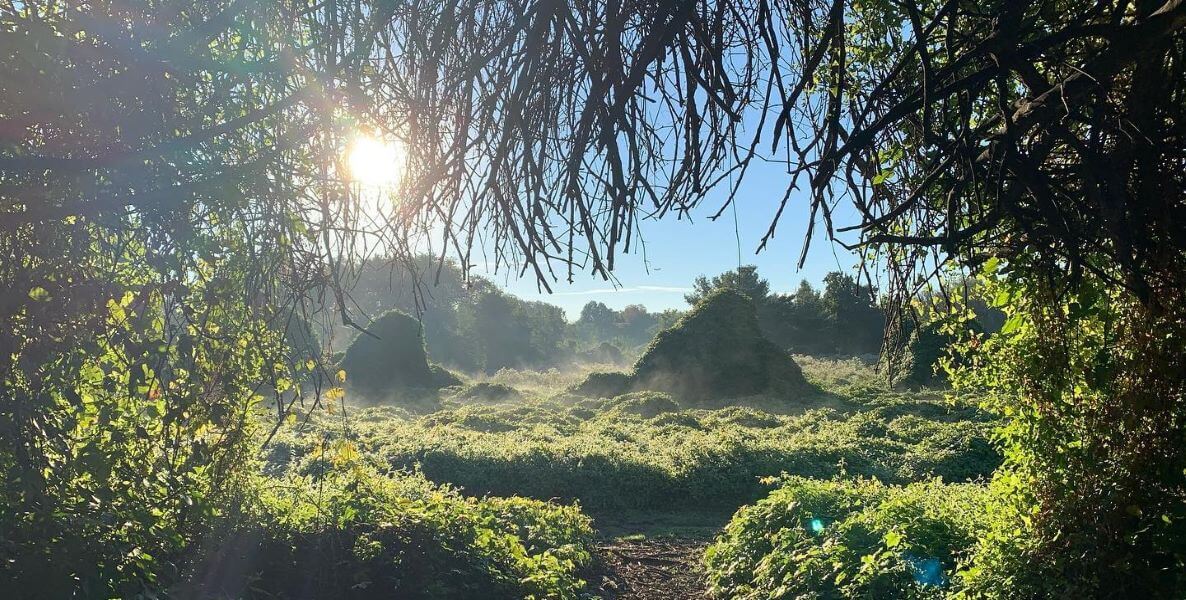Allison Schapker has done this presentation before. The chief projects officer for the Fairmount Park Conservancy (FPC) deftly scrolls through a PDF of the 2019 FDR Park Master Plan, explaining how the nearly 350 acres in deep South Philly were landscaped in 1914, what they’ve become today, and how her organization plans to rework them by 2026.
For three years, Schapker and her colleagues have presented the $225 million project again and again to different city leaders, prospective donors, community groups, and, more recently, South Philly youth sports organizations. The Conservancy has done this for FDR many more times than it expected to, because 2019 was pre-pandemic, pre- a three-years-long delay, pre- thousands more people using FDR, and pre- many of those FDR users sharing their, um, opinions on what they want the city’s largest neighborhood park to be.
Some folks want parts of the park to change for their needs. Others want it to remain the same for theirs, only “same” meaning a new sort of same. It’s a little complicated. It’s also a bit fraught. And, the conversation around a beautiful space has gotten ugly.
It’s also become classic South Philly: A bunch of people get mad about something, complain among themselves, complain to authority, possibly blow certain facts out of proportion, adopt a conspiracy theory or two (remember the old Pennsport chestnut, Trees breed disease?). Most important, ostensibly opposing groups do not talk to each other — and people in charge take the flack and deal with everyone separately.
Anyone feel a shrug coming on?
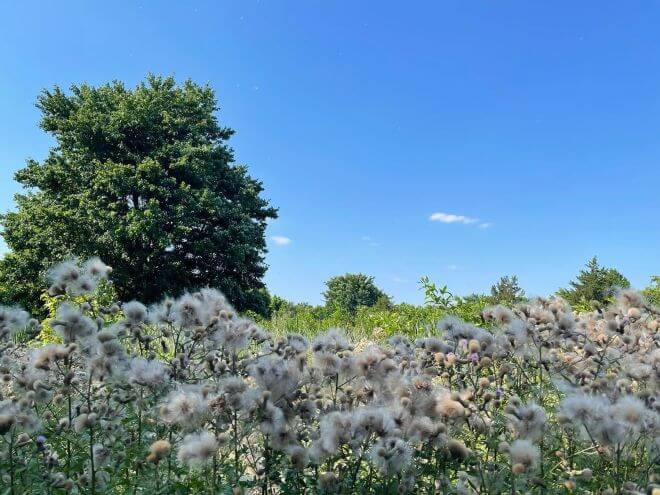
A lot has happened since then
A few years back, Philadelphia’s Department of Parks & Recreation charged the Conservancy with transforming FDR. The FPC had done the same with very many city parks. So, the FPC and the outside firms it hired conducted ecological and community studies (some say the latter were flawed), and came up with an ambitious design which demonstrates, Schapker reiterates, “the highest and best use” for all involved.
The Master Plan’s first focus: mitigating a major volume of unwelcome rain and runoff water. FDR was built atop marsh — almost an island, really — and is now surrounded by acres and acres of non-porous parking lots and throughways. It’s also next to two rivers, and its tide gate is broken. You don’t have to know what a tide gate is to notice: Things get real soggy down there real fast.
“FDR is the most diverse and widely used park in the city,” says Barbara Capozzi, “NOT by accident, Thank You very much.”
The new layout’s main visible feature is an “ecological core” comprising the park’s signature “lakes” (which is also how the longtime locals refer to the whole park) and wetlands, with trails connecting them. There will also be new facilities: a visitor center, a large, accessible playground, picnic grove, concessions, more parking. Two sets of courts to play basketball — finally! — including one that will join the world-famous skatepark under I-95 (the graffitied concrete masterpiece will not change, Schapker reassures).
There are currently no spots designated for the 80-some vendors of the Southeast Asian market that draws impressive weekend crowds, nor the vibrant Sunday soccer market that sells tacos, arepas, suspiciously delicious-looking beverages and jerseys alongside two soccer fields where teams from Mexico, Jamaica, Honduras, and beyond play. The City has promised to find space for both ventures.
Those markets, which have expanded exponentially in recent years, are just two examples of how FDR has changed since the Master Plan was announced in 2019. There’s also more traffic overall (well over 80 percent of all visitors arrive by car), and at least five of the eight baseball/softball fields received major upgrades.
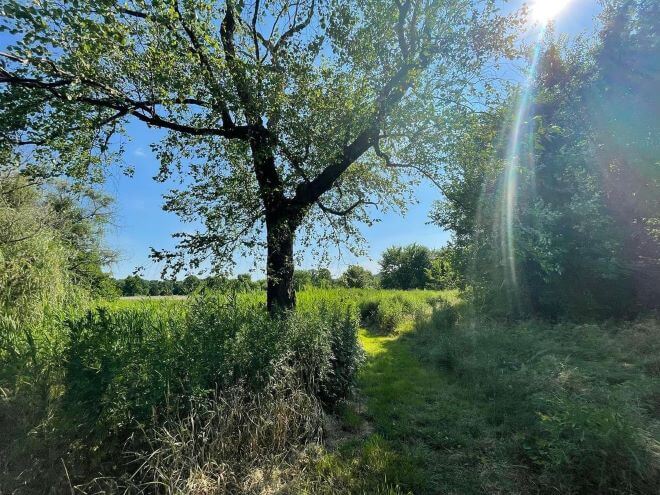
More people know about FDR than ever before, and it’s increasingly popular for elaborate first birthday parties, festive quinceañeras, boisterous family reunions, end-of-Ramadan Eid picnics — all kinds of gatherings for all kinds of people.
Barbara Capozzi, president of both the Friends of FDR Park and the Packer Park Civic Association, says she and her fellow volunteers have worked hard for 20 years to make the park what it is today. “FDR is the most diverse and widely used park in the city,” she writes in an email, “NOT by accident, Thank You very much.”
One major change came about via nature, not humans: the transformation of the park’s circa 1940, 149-acre golf course into “the Meadows.” When Covid delayed implementation of the Master Plan, the City let that section of the park do its own thing. Thing it did.
Suddenly, the course, which had long been fairly terrible for its golfers but pretty cool for its explorers, became something else entirely. Grass disappeared under endless expanses of majestic meadow. Hikers found deer in the woods and noticed ancient oyster shells on packed mud trails, and, just beyond the sodden driving range, an otherworldly grove of vine-strangled trees resembling modern sculpture that could adorn Morris Arboretum.
As Covid raged, you might recall that people went outside and discovered, for the first time in recorded history, the natural world. This happened in South Philly too. It happened to yours truly.
I became one of thousands of walkers, hikers, bikers, birders, and picnickers — old, young, Black, Brown, Asian, White, LGBTQ+, canine — who felt the utter joy of entering an apparent wilderness within the confines of pavement-covered South Philly. The Meadows were not perfect. In many places, they were, as I said, mucky, especially after it rains, and those giant leaves rimming the creeks, whose surfaces turn algae-chartreuse each summer — clearly belonged to invasive or alien species.
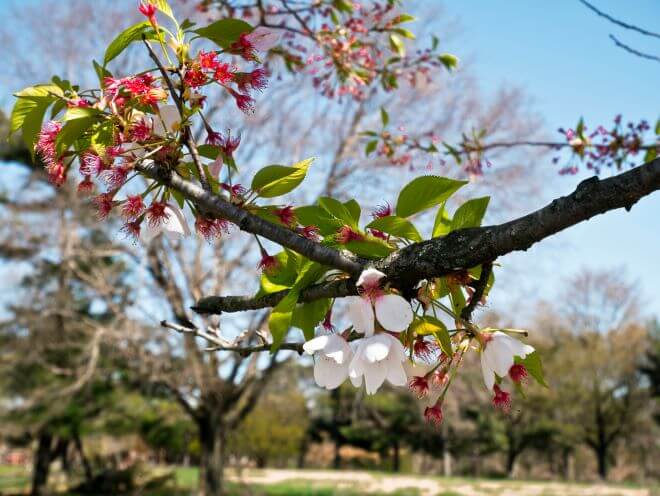
Molly Des Jardin
But these visitors, me included, did not seem to care. Afternoons when my kid would head to baseball practice at another end of the park, I’d daintily — ha! — climb onto a newly installed tree swing overlooking a woods- and wetlands-bordered slope. When my best friend’s child was receiving treatment for lymphoma, we’d all meet up there, masked to the nines. It was such a welcome escape during such a shitty few years.
I also spotted kids building huts out of curated piles of sticks. I spotted groundhogs, frogs, turtles, small brown creatures I assumed were hedgehogs but were definitely not hedgehogs, and so many birds. I almost invested in … binoculars. I even thought of … camping.
But mostly, I marveled at all the nature I hadn’t experienced or even noticed before, and saw all kinds of people doing the same. This, in South Philly?
Unfortunately, the Meadows is also the plan’s site — here comes the contentious part — for 12 regulation-size football-futbol artificial turf fields (about 24 acres, created, one Meadows supporter said in the Citizen, out of the equivalent 130 plastic bags per Philadelphia resident), and 10 tennis courts, a handful of basketball courts, a 12-acre driving range (surface TBD), a second access road, concessions, and definitely things I forgot.
Today, many of the fans of the Meadows want that space, or a better version of that space — minus invasive species, plus better signage and trails — to remain as is. In other words, unlike sourdough starter, the pandemic-born obsession with nature in FDR stuck around. It also inspired “save the Meadows” petitions on Penn Environment and Change.org, along with op-eds, including that one in the Citizen, a protest, a coalition, and, of course, freaking endless chatter on social.
But there are two sides to every issue. At least.
There are the birds.
Keith Russell, program manager of urban conservation for the Mid-Atlantic Audubon Society, has been birdwatching at FDR since the ’80s. You can guess his side.
“I have always thought of [FDR] as an oasis in South Philadelphia,” says Russell, “It is the one place you can go and get lost, detach from people, noise, craziness, hustle and bustle. It’s like being in a cocoon of peace. You could go down to John Heinz, but this is a lot closer … Given the climate we’re in, with so much bad news. How do you handle that? FDR is an opportunity for anybody — it doesn’t matter how much money you have or who you are — to walk around and be at peace.”
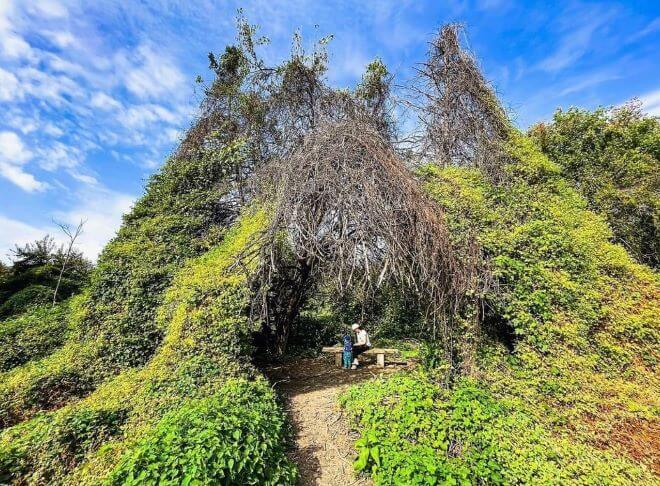
(Just to point out: As frequently lost as you can get in FDR’s Meadows, you are also always aware you’re still in Philly, thanks to roadway noise from I-95, planes overhead, an occasionally used cargo railway along one end, and, more often than not, the scent of Butterscotch Krimpets or Chocolate Juniors from the nearby Tastykake factory.)
Russell, who is largely responsible for transforming another unkempt and inaccessible city gem into a natural habitat — Strawberry Mansion’s Discovery Center — says he’s seen more and more birders like himself — a Black birder — there lately too. The Fairmount Park Conservancy sponsors bird walks at FDR on the regular.
But, Russell and other local naturalists I spoke with, believe the expanse of synthetic turf — and the lights that will be used there at night — will harm wildlife, especially migrating birds. They say, moreover, it will also deplete opportunities for city folk, especially children, to immerse themselves in nature in a neighborhood otherwise without any.
One of these naturalists is well-acquainted with the park’s natural assets (and flaws) and prefers to “stay out of the fray” by staying anonymous. They say, “Most of the stuff in the City’s proposal to improve the existing park is fantastic. They could do that, make soccer fields from empty lots (nearby) and design the runoff to naturally return the space to marshland. Some land will be too high, and will create dry spaces, forests, and fields. They can build boardwalks, and still even the fishing pier. They could literally do it all just without putting in all those turf fields.”
Basically, birders and their ilk want improvements, sans synthetics. They argue that Philly, especially South Philly, is full of vast, empty lots — including a sizable one across Pattison Avenue, who knows how many across Broad Street, and untold others in the Navy Yard, and along Delaware Ave. Why not move sports there?
“People are going to have picnics. They can hang out. The plan that I heard wasn’t just about football,” Coach Ant says. On the other hand,”If somebody was putting a facility like this at the Navy Yard, I’d be gung ho for it just as much.”
Then, there is baseball. And football. And soccer …
No way, say Schapker and the head of Parks and Recreation, Kathryn Ott Lovell. Schapker balks big-time at the suggestion that many sports fields — and the people who play on them — don’t belong in FDR. “So, the people should just go somewhere else … the kids should just play somewhere else?!” she pretty much shouts.
In truth, city sports organizations do need more places to play. Parks and Rec and the FPC have made the mistake before of overlooking beloved neighborhood sports fields. They want to place Philly athletes, especially youth, in a natural setting, to give clubs like South Philly’s Sigma Sharks — nine youth football travel teams of players ages 6 through 14 — access to both durable, low-maintenance fields — and to nearly seven miles of accessible nature trails.
Sharks president Anthony “Coach Ant” Meadows says he got excited when Parks and Rec recently showed him the Master Plan. The Sharks currently play on “distressed” grass fields at Chew and Donald Finnegan (their home field, at Vare, is under reconstruction). He says the upside of those fields, especially Vare, is that most players can get there by foot. The downside: Grass is expensive and difficult to maintain. Plus, the Sharks need more fields, period.
“We usually play all our games over the whole weekend. If you have 12 fields down there [in FDR], you can get a lot of games out of the way really quick,” he says. Meadows plans to return to practicing at convenient Vare, once it’s redone, but believes that FDR’s dozen turf fields could become a citywide and regional destination for youth football. “Most of the places that have fields and facilities with multiple fields are down South, Florida, maybe Texas.” And, Meadows, despite his name, prefers synthetic turf.
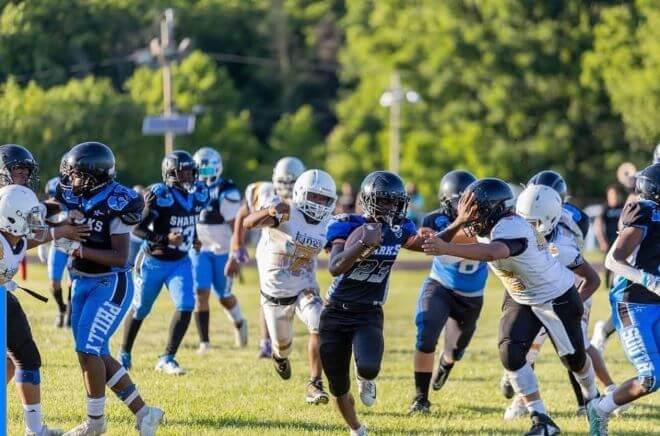
A native South Philadelphian, Coach Ant also loves the idea of making the Lakes the Sharks’ home base. “People are going to have picnics. They can hang out. The plan that I heard wasn’t just about football,” he says. On the other hand, “If somebody was putting a facility like this at the Navy Yard, I’d be gung ho for it just as much.”
Another youth athletic operation jazzed about the prospect of new fields is the Anderson Monarchs, who may be best known for baseball — Mo’ne Davis, still waiting for you to accept my friend request! — but have six soccer teams seeking new home fields. The group’s July 13 op-ed in the Inquirer calls on the City to rectify the inequity between the facilities their players, who are mostly Black, use, and those of, say, Montgomery County. They’d like FDR to have “fields unlike anything in Philadelphia.”
Sports already happen at FDR. I should know. Although I cherish my time in the Meadows, spring through fall, I practically live at FDR’s three Little League fields, the by-permit home to about 350 players, ages 7 to 13, from the Philadelphia Dragons (formerly Taney, the group Davis joined for the 2014 Little League World Series. No, I’m not really stalking her.) One of those players legally belongs to me.
In 2020, with help from the money families paid for a season that didn’t happen, the Dragons spent $400,000 to fix up their flood-prone grass fields. The group also pays the Phillies $30,000 a year to maintain them. Despite all the money his organization has laid out, Dragons President John Maher is cool with moving to turf fields — cheaper upkeep — but worries his group will lose access, since the Master Plan whittles down FDR’s six available baseball fields to four. (There are two more mint-condition diamonds for high school and college play; those will remain where they are).
Like the Sharks and the Monarchs, the Dragons have so many kids, they spread practices and games across several parks.
In all of this back and forth, one thing both athletes and nature lovers agree on: They’re slightly concerned about the possibility of Men’s World Cup teams coming in to practice there for eight weeks in 2026. (If anyone can screw things up, it’s FIFA. On the other hand, FIFA would be obligated to fix up one multipurpose pitch to meet their fancy, natural-sod standards.)
Can we get to #FDRforall?
Schapker reiterates (and reiterates) that this is a 350-acre park — 350! 3-5-0! — that has ample space for everyone to enjoy sports, picnics, and even wildlife. She points out The Ramble in New York’s Central Park is only 40-odd acres (it’s 38), and it attracts more than 200 (really, more than 250) species of birds. Maybe our birds will be fine.
There’s more good news for solutions seekers: The project has just begun. The new visitor center, playground and welcome plaza at Pattison and Broad are under construction. Soon, the airport will get to work on wetland mitigation in 33 acres of the southwest corner of the park, digging out, moving muck to a “soil hill” that stretches from 300-year-old Bellaire Manor (still occupied! Not going anywhere!) into the Meadows, and turning the spot they dug out back over to nature.
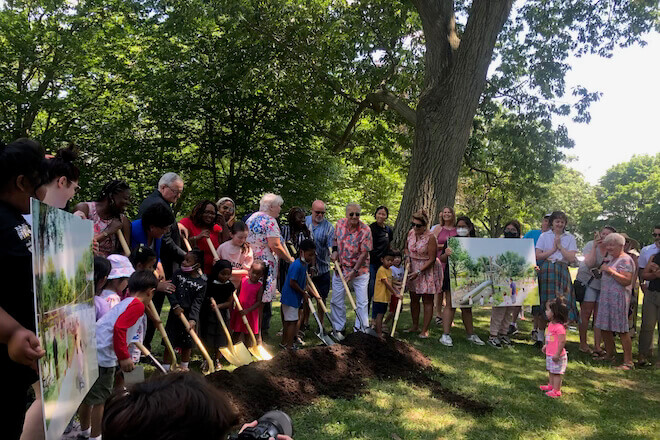
The rest of the park is still to-be-tackled. This means: Adjustments can be made. Maybe?
Could nature and athletics coexist? Fairmount Park Conservancy publicist Cari Feiler Bender believes so. She says, “That’s why we have the hashtag, #FDRforall.”
Hashtag all you want, Feiler Bender. Philly is a real city, full of real people with different needs and interests. Differences can cause conflict, or create understanding. They often require work. To live in a city, you have to be able to do the work. Can we?
In other words, before the Meadows succumb to the bulldozer, we all have a minute. Let’s take it.
Here’s a point I should have made earlier, but stick with me: Anthony Meadows of the Sharks hasn’t been to the old golf course since he was a kid. The Dragons’ John Maher spends all his extra time fielding annoying baseball parents’ petty demands for stuff like more durable baseball socks — they are needed! I’m not saying the birders interviewed for this piece aren’t sports fans, but I’ve never spotted one among the folding chairs along the first or third baselines.
Instead of taking to Twitter, how about the FPC and Parks and Recs get these folks together to talk, listen, and ideate?
Could the 12-acre driving range go down to six? Could two or three football fields stay trees and stuff? Could a lights-out policy go into effect during migration? Let’s talk about how good youth football is for our city. Let’s talk about the benefits of nature on mental health.
Birders and baseball coaches and landscape designers are not natural enemies. Why not invite them to walk the Meadows, show them the plan in-situ, and let them see if they can work something out? If I had to guess, I’d say they’d like each other. They’re all pretty nice.
Schapker’s description of a plan for this park as needing to be “highest and best” is right on. The city’s largest neighborhood park needs to serve everyone, including and especially the people and settings society most often neglects.
There is only one place like the Meadows in South Philly. Spending a little more time, and maybe even more money, to come up with a compromise has got to be worth it.
![]() RELATED STORIES ABOUT PARKLAND AND RECREATION FROM THE CITIZEN
RELATED STORIES ABOUT PARKLAND AND RECREATION FROM THE CITIZEN
MOST POPULAR ON THE CITIZEN
Photo by Save The Meadows at FDR park Instagram


